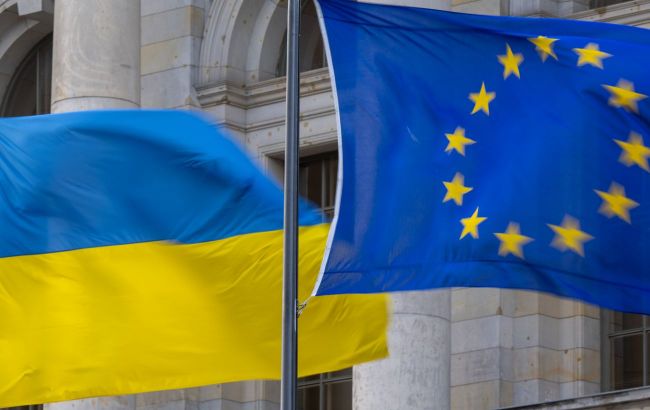Europe has to double its assistance to Ukraine if the U.S. stops support - Kiel Institute
 The EU should double its aid to Ukraine (Getty Images)
The EU should double its aid to Ukraine (Getty Images)
The European Union's military support for Ukraine remains the only important option for Kyiv if U.S. aid stops. But it should be at least doubled, according to a report by the Kiel Institute for World Economics, whose experts maintain the Ukraine Support Tracker database.
"This is a challenge, but ultimately a question of political will. The EU countries are among the richest in the world and so far they have spent not even 1 percent of their 2021 GDP to support Ukraine," says Christoph Trebesch, Director of Research at the Kiel Institute.
According to him, with the final approval of the EU's €50 billion loan to Ukraine, financial assistance to Ukraine is guaranteed. "This is much less clear with regard to military aid, where the dynamics have slowed," Trebesch says.

Kiel Institute
According to the latest data from the institute, U.S. commitments to aid and supply Ukraine have essentially come to a standstill as the US Congress has not passed any new support package.

Kiel Institute
European aid, by contrast, continues to grow both in terms of commitments and in terms of "disbursements" - that is, aid that has been "earmarked" or reserved for a specific purpose and is to be sent to Ukraine soon.
New data show a large gap between promised and actual aid flows. As of January 15, 2024, the EU and its member states have announced a total of €144 billion in aid, but have only allocated €77 billion of this amount for specific purposes. The total amount of allocated EU financial assistance (€34 billion) is similar to the total amount of allocated military assistance (€35.2 billion).
Slowdown in aid
According to the Institute, in the period from November 1, 2023, to January 15, 2024, newly announced military aid (commitments) amounted to €9.8 billion. For approximately the same period last year, commitments amounted to €27 billion, including €21 billion from the United States.
Current assistance continues to be provided by a few major donors, including the Nordic countries, Germany, and the United Kingdom, while most past donors have pledged little or nothing new.
In the military sphere, the data also show a large gap between pledged and actual aid. Germany remains Europe's largest military donor, with a total military commitment of €17.7 billion since February 2022, of which €9.4 has so far been allocated to specific military packages sent to Ukraine.
The UK recently announced new military aid of €2.9 billion, bringing its total military commitment to €9.1 billion. Of this amount, 4.8 billion euros have reportedly been allocated until mid-January 2024.
Since November, Denmark has increased its military commitments to the Danish-Ukrainian Fund by €3.5 billion, making it one of the largest military donors by percentage of donor country GDP. To date, Denmark has pledged €8.4 billion in military aid, of which €4.5 billion has been disbursed. Norway's €6.6 billion multi-year Nansen program continues to allocate funds for military purposes such as air defense and ammunition, with total military allocations now standing at around €1 billion.
Ukraine Support Tracker tracks and quantifies military, financial, and humanitarian aid pledged to Ukraine since January 24, 2022. It includes 41 countries, including EU member states, other G7 members, Australia, South Korea,Türkiye, Norway, New Zealand, Switzerland, Turkey, China, Taiwan, India, and Iceland. It includes commitments made by the governments of these countries to the government of Ukraine.
According to the Institute for the World Economy, the amount of newly allocated aid to Ukraine from August to October 2023 fell sharply: the total value of new packages amounted to only €2.11 billion, which is 87% less compared to the same period in 2022 and is the lowest amount since January 2022.

